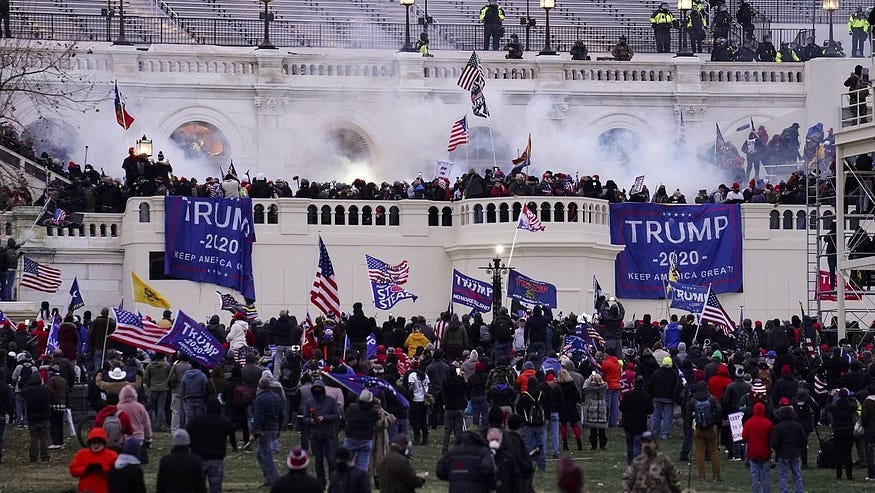Disinformation and Echo Chambers
Catalysts for the January 6 Capitol Riot and Its Legal Aftermath

Introduction:
January 6, 2021, will be remembered as a day when misinformation and media manipulation culminated in a historic and violent event at the U.S. Capitol. This comprehensive case study delves into how disinformation, media bubbles, and echo chambers not only incited the riot but also shaped its legal repercussions.
Background:
The Capitol riot was a direct consequence of widespread misinformation surrounding the 2020 presidential election results. False narratives, primarily propagated through social media and partisan news outlets, created a fertile ground for unrest.
This case study examines the circumstances surrounding an individual known as the ‘Pink Hat Lady,’ who participated in the Capitol Riot on January 6. Her involvement and subsequent imprisonment shed light on broader societal issues, including misinformation, political polarization, and the influence of political leaders and media.
The Role of Disinformation:
Echo Chambers: Social media platforms and certain news channels acted as echo chambers, reinforcing false claims of election fraud. This incessant flow of misinformation created a parallel reality for many
The Echo Chamber Epidemic
The internet, once hailed as a democratizing force for information and understanding, has morphed into a breeding…
Information Warfare: The spread of disinformation was not random but a coordinated effort resembling an information warfare campaign, aiming to undermine trust in democratic institutions.
2024 World War III
In the year 2024, we find ourselves in the throes of a new kind of global conflict: World War III, a war not of nations…
Legal Proceedings in a Misinformed Society:
Charges and Convictions: Over 1,230 individuals were charged, a reflection of how misinformation can lead to widespread unlawful behavior.
Sentencing Patterns: The sentencing disparities, ranging from days to 22 years, suggest a legal system grappling with the consequences of actions fueled by misinformation.
The case of Enrique Tarrio, the former national leader of the Proud Boys, provides a stark example of the consequences of seditious conspiracy and participation in significant national events like the January 6 Capitol riot. This case study explores the background, actions, and sentencing of Tarrio, highlighting the legal and societal implications.
Notable Cases Amidst Information Warfare:
High-Profile Sentences: The case of Enrique Tarrio, sentenced to 22 years for seditious conspiracy, highlights the severe legal outcomes for leaders of misinformation-driven movements.
Impact of Social Media: The role of social media in intensifying beliefs and mobilizing individuals underlines the challenge of countering misinformation in the digital age.
Legal Challenges in the Age of Disinformation:
Supreme Court Review: The review of the obstruction charge by the Supreme Court is a critical moment, reflecting the judiciary’s effort to adapt to the complexities introduced by disinformation.
Continuing Uncertainty: The ongoing search for unidentified assailants and defendants on the run exemplifies the ongoing battle against the repercussions of misinformation.
Unresolved Mysteries and the Power of Disinformation:
Pipe Bombs Incident: The still-unsolved case of the pipe bombs points to the enduring impact and complexity of dealing with events influenced by misinformation.
Conclusion:
The January 6 Capitol riot and its aftermath offer a stark illustration of the tangible consequences of disinformation and media echo chambers. This case study underscores the urgent need for strategies to combat misinformation and reinforce the resilience of democratic institutions against such destabilizing narratives. The ongoing legal challenges and unsolved cases reflect the deep and lasting impact of the information warfare that led to this dark day in American history.

